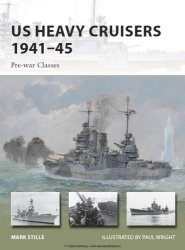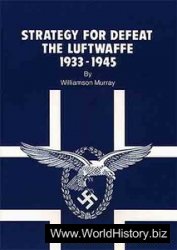EAGLE AIRWAYS, LTD. (1): United Kingdom (1953-1960). To further promote long-haul scheduled services, Eagle Aviation, Ltd. owner Harold Bamberg changes the name of his company to Eagle Airways, Ltd., on July 1, 1953. The maintenance subsidiary, Aviation Servicing, is simultaneously relabeled Eagle Aircraft Services. In late summer, new services are opened from London (CTN) to Aalborg and Goteborg, complementing the Blackbushe-Belgrade flights begun by the old company on June 6.
A total of 357 passengers are flown in 6 months of international service and the fleet grows to comprise 7 Vickers Vikings and a number of Douglas DC-3s.
A Vickers 610 Viking 1B freighter with three crew is destroyed by a hard landing at Nuremberg, Germany, on December 20; there are no fatalities.
Scheduled and charter flights continue in 1954. Vikings, converted to freighters, participate in the contract shipment of various goods throughout Europe during a nationwide dock strike.
During the year, the fleet is increased by the addition of two Avro York Is, six Vikings, and three DC-3s, although two of the Douglas transports, a Viking, and the Yorks are sold within six months.
During 1955, additional “trooping” services are flown to Egypt, the Mediterranean, and West Africa and Bamberg takes over the travel agency of Sir Henry Lunn, together with that company’s booked inclusive-tour packages. The government now permits Eagle to launch several scheduled routes: Manchester to Munich and Vienna and Black-bushe to Luxembourg and Innsbruck.
Throughout the year, 11 Vikings and 2 DH 89As are added and 1 York I, 4 Vikings, and 1 Dragon Rapide are sold.
A variety of scheduled and charter services are taken up in 1956, including a large number of inclusive-tours flown for several travel agencies. On November 16, Eagle is the second airline to reach Vienna to participate in the evacuation of refugees fleeing the Hungarian Revolution. When the operation ends on December 14, Eagle has, in 36 flights, flown 1,200 of the
7.000 airlifted refugees permitted into Britain from Austria.
During the year, three Vikings, three Bristol 170 Mk. 21 Freighters, an Airspeed AS.65 Consul, and a DC-3 are purchased while six Vikings, a DC-3, and a DH 89A are removed.
In 1957 , as plans are made for expansion, two Vickers Viscount 805s are ordered, with options taken on three more. A chartered Viking 1B en route to France on May 1 with 5 crew and 30 servicemen and their dependents aboard, crashes at Star Hill, near Basingstoke, England (34 dead). Scheduled service to Copenhagen and Hamburg is inaugurated on June 3. The exploratory company Eagle Overseas Airways, Ltd. is established on December 11; this becomes the subsidiary Eagle Airways (Bermuda), Ltd.
The first Viscount is delivered to Blackbushe on December 23; christened Enterprise, it is placed on the Hamburg route the next day.
This year also sees the fleet increased by the addition of seven Vikings, a DC-3, and two Vickers Valettas (although the DC-3 and the Valettas do not enter service) and decreased by the removal of three Vikings, all three Bristol 170s, and three DC-3s.
A Vickers 657 Viking I is destroyed in a ground accident at El Adem, Libya, on February 26, 1958. In April, the Enterprise flies to Bermuda and upon receipt of the Eagle Airways (Bermuda) Ltd. authority to America, launches daily Bermuda-New York Viscount 805 service on June 2. During the next 6 months, almost 10,000 passengers are carried on this route.
In February, a de Havilland DH 104 Dove and a DH 114 are purchased.
The second Viscount 805 is received in March and is christened Good Fortune. It is employed to open several new regional routes during the summer: Blackbushe to Pisa, Manchester to Brussels, Copenhagen, and Hamburg, and Birmingham to Palma. The Vikings begin flying regularly Manchester-Ostend and Blackbushe-Ostend, Jersey, Innsbruck, Dinard, and Luxembourg.
In August and September, three Douglas DC-6As are purchased. During the year, the company sells five Vikings.
A second Caribbean subsidiary, Eagle Airways (Bahamas), Ltd., is formed in the winter of 1959. Although the new DC-6A freighters boost freight business during the year, the number of European scheduled services and frequencies are cut back and the Good Fortune is transferred to Bermuda. In April, Viscount 805 service is started by Eagle Airways (Bermuda), Ltd. from Bermuda to Baltimore. The Bermuda subsidiary acquires 10% of the traffic on its New York route, carrying
15.000 passengers by December.
A chartered Vickers 635 Viking 1B with 4 crew and 32 passengers makes a forced landing at Agadir, Morocco, on December 22; there are no fatalities, but the aircraft is damaged beyond repair.
For the first time, Bamberg’s operation has purchased no new aircraft during the year; however, the surviving Viking is retired.
Eagle Airways (Bahamas), Ltd. inaugurates Nassau-Miami Viscount 805 flights on March 1, 1960. With a significant Caribbean operation and one of the largest European networks of any British independent airline, the carrier becomes ripe for acquisition.
On March 21, major shareholding is assumed by the Cunard Steamship Co., Ltd., and the airline is transformed into Cunard-Eagle Airways, Ltd.
EAGLE AIRWAYS, LTD. (2): Private Bag 3048, Hamilton 2020, New Zealand; Phone 64 (7) 838-95999; Fax 64 (7) 838-9505; Code 6Q; Year Founded 1969. Formed at Hamilton on the North Island in summer 1969 as a charter operator, Eagle inaugurates flights early in November linking the base with Wanganui. During the next eight years, the carrier maintains lightplane flights to various destinations on the North Island.
Early in 1977, the carrier obtains permission to inaugurate third-level commuter service and in April begins scheduled frequencies to Auckland, Palmerston North, and Wanganui.
During 1978, the company adds one Embraer EMB-110P1 Ban-deirante to the earlier fleet of a Piper PA-31-350 Navajo Chieftain, one Piper PA-30 Twin Comanche, and a Beech B-58 Baron.
Flights continue apace during the remainder of the decade and into the 1980s. Passenger boardings reach 36,000 in 1981 and 43,000 in the following year.
After the collapse of Air Central, Ltd. late in 1982, the company takes over a number of its routes. New stops include Nelson, Plymouth, Napier, Gisborne, and Rotorua.
Passenger boardings are 72,000 in 1983.
In 1984, the fleet comprises 2 Bandeirantes, 5 Navajo Chieftains, and 1 Beech Baron. Managing Director D. Good adds another EMB-110P1 in 1987-1988, retiring the B-58 and a PA-31-350.
In the summer of 1989, the national flag carrier, Air New Zealand, Ltd., establishes a commuter and regional feeder system, Air New Zealand Link, modeled upon that sponsored by Delta Airlines in the U. S. In November, the major acquires 50% ownership in the small airline.
The route network in 1990 includes nine points all on the North Island, with the principal destinations being Auckland, Gisborne, Napier, and Tauranga. Malcolm Campbell becomes managing director and the fleet is upgraded by the addition of four more Bandeirantes.
One EMB-110P1 is withdrawn in 1991-1992 and is superseded by two Fairchild Metro IIIs.
In 1993-1994, the workforce totals 155 and the fleet includes 2 Metro IIIs and 6 Bandeirantes. Services link Auckland International Airport with Gisborne, Hamilton, Kaitaia, Napier, Hastings, New Plymouth, Palmerston North, Taupo, Tauranga, Wanganut, Whakatane, and Whangerei.
Frequencies to these markets are continued in 1995-1999, as the fleet is increased to 8 Bandeirantes and 4 Metro IIIs. During these years, significant shareholding is taken by Air New Zealand, Ltd. and the company becomes an Air New Zealand Link commuter partner. Airline employment grows to 233.
A ninth Bandeirante joins the fleet in early 2000.




 World History
World History









